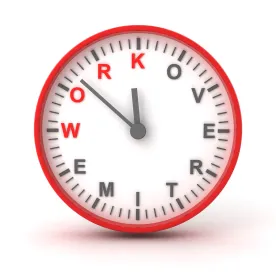The March 5 ruling, which will apply retroactively, establishes a method that will result in a much higher overtime rate than the federal method. California employers who pay flat sum or other similar bonuses to nonexempt employees should therefore review how they calculate overtime compensation to ensure compliance.
The California Supreme Court issued its decision in Alvarado v. Dart Container Corp.1 on March 5 regarding the proper method under California law to calculate nonexempt employees’ overtime rate of pay when those employees receive “flat sum” bonuses (i.e., bonuses whose amounts do not vary depending on employee productivity, efficiency, or effort). Examples of flat sum bonuses include attendance bonuses, seniority/longevity bonuses, safety bonuses, and certification bonuses. The court adopted the Division of Labor Standards Enforcement’s (DLSE) view that the amount of a flat sum bonus must be divided by only the employee’s actual non-overtime hours worked and then multiplied by 1.5 to calculate the employee’s overtime rate (or 2.0 for double time).2 This is different from the calculation method allowed under the federal Fair Labor Standards Act where the flat sum bonus is divided by all hours worked—straight time and overtime hours—and then multiplied by 0.5 to calculate the employee’s overtime rate. The method required by the California Supreme Court results in a much higher overtime rate than the federal method.
Background
Plaintiff Hector Alvarado worked as a warehouse associate for the defendant employer, a manufacturer of food service products. He was paid on an hourly basis, and in addition was paid an “attendance bonus” if he was scheduled to work on a Saturday or Sunday and actually did work. The regular rate issue in this case arose because this type of bonus must be factored into the employee’s regular rate of pay so that the employee’s overtime pay reflects all forms of non-discretionary compensation the employee earned. Here, the employer calculated the employee’s overtime compensation for the bonus in a complicated way that resulted in the bonus being divided by all weekly hours worked by the employee, including overtime hours. The additional overtime for the bonus was then paid by dividing this number in half to determine the bonus overtime rate, and then multiplying that rate by the number of overtime hours worked.
The California Court of Appeal held that because there was no valid California law or regulation explaining how to factor a flat sum bonus into an employee’s regular rate of pay for purposes of calculating overtime, the relevant federal regulation must be followed, and the employer’s method complied with the federal method. The Court of Appeal recognized that the DLSE Enforcement Manual did address the calculation of overtime for a flat sum bonus but held that because the DLSE Manual failed to comply with the Administrative Procedure Act (APA), it is void as underground regulation that is “not entitled to any deference.”3
The California Supreme Court acknowledged that “an agency’s underground interpretive regulation should not be afforded any special weight or deference, but it is nonetheless something a court may consider, and assuming the court is persuaded that the agency’s interpretation is correct, the court may adopt it as its own.”4 Finding that it was persuaded by the DLSE’s view, the court adopted it as the law. The court reasoned that because the attendance bonus was payable even if the employee worked no overtime, only non-overtime hours should be considered when calculating the bonus’s per hour value, meaning the number of non-overtime hours actually worked, not the maximum non-overtime hours (40) in a week. The court also ruled that this rate should be multiplied by 1.5, not 0.5, in determining the employee’s overtime rate.
Retroactive Application
Notably, despite the employer’s urging that the court’s holding was “new law” that should be given prospective application only, the court held that its decision would apply retroactively because the employer “cannot claim reasonable reliance on settled law.”5
Implications
The court clarified that its holding is limited to flat sum bonuses, and that a different analysis may be warranted for other types of non-hourly compensation whose amounts are roughly increased based on hours worked such as a production or piecework bonus or a commission.6 Given the court’s holding, California employers who pay nonexempt employees flat sum or other similar bonuses should review how they calculate the regular rate for purposes of paying overtime compensation to ensure compliance with the method required by the California Supreme Court.
1. Alvarado v. Dart Container Corp., __ Cal.5th ____ (Mar. 5, 2018).
2. Id. at 37.
3. Tidewater Marine Western, Inc. v. Bradshaw, 14 Cal.4th 557, 577 (1996).
4. Alvarado at 14.
5. Id. at 36-37.
6. Id. at 19 n. 5.




 />i
/>i

